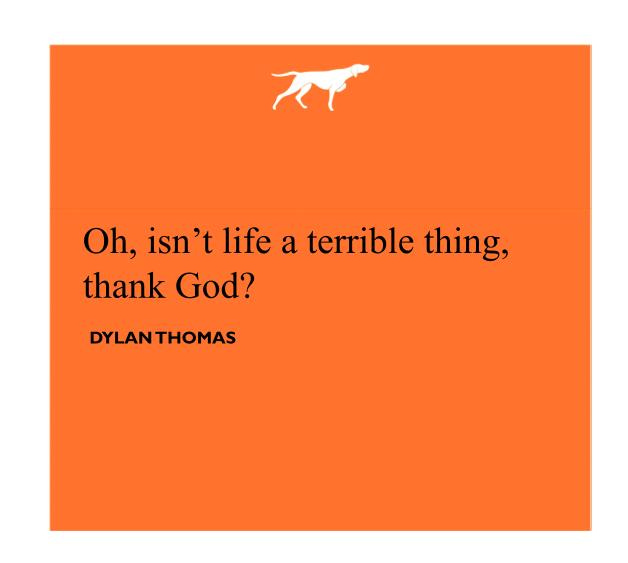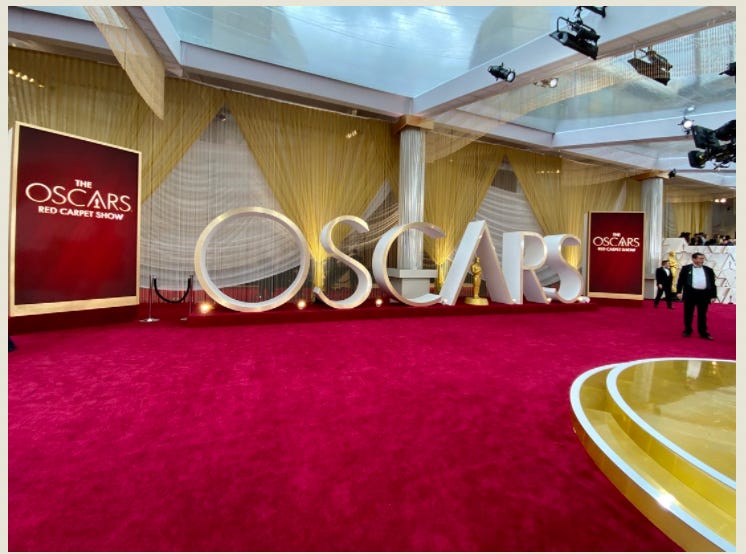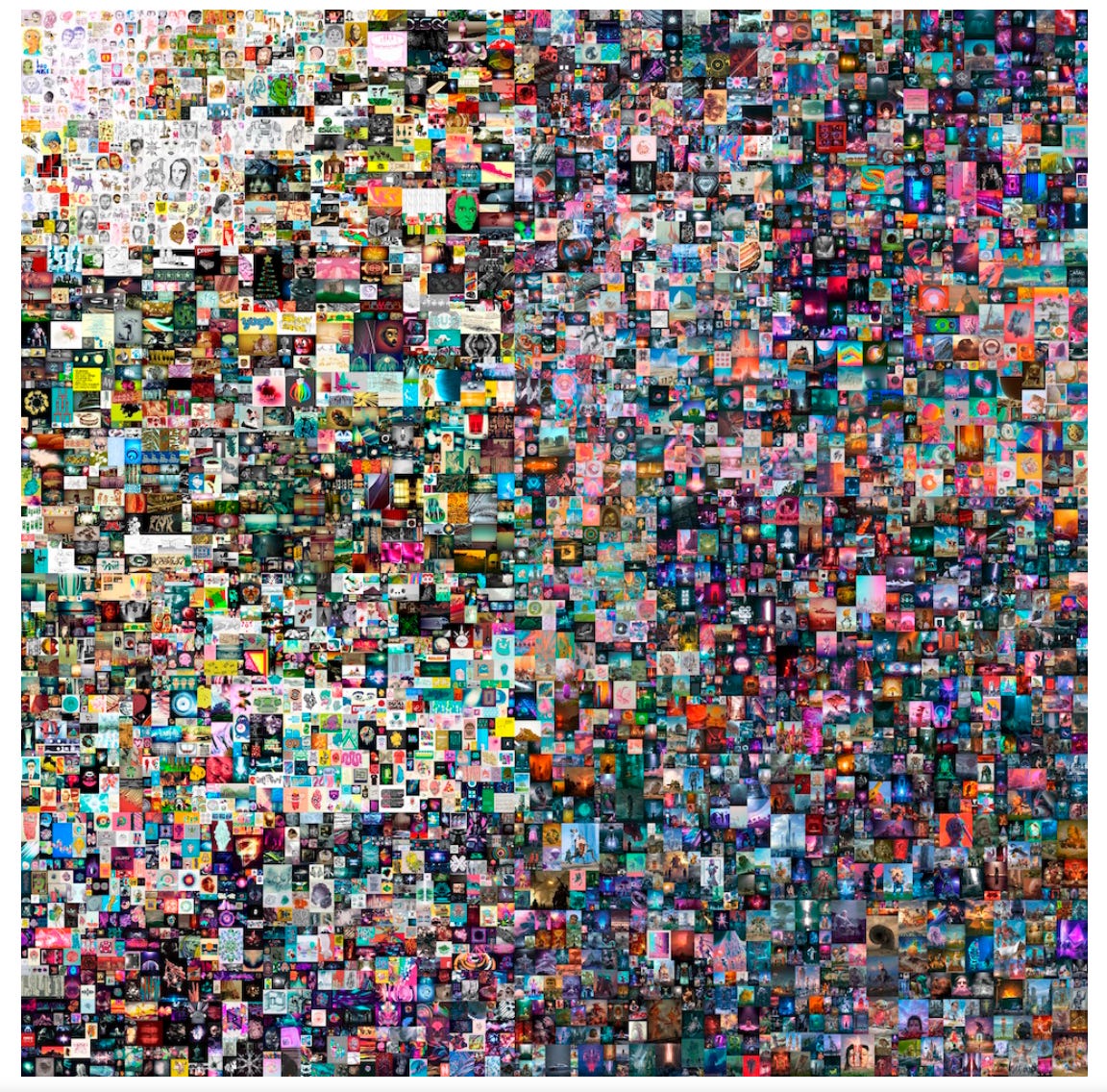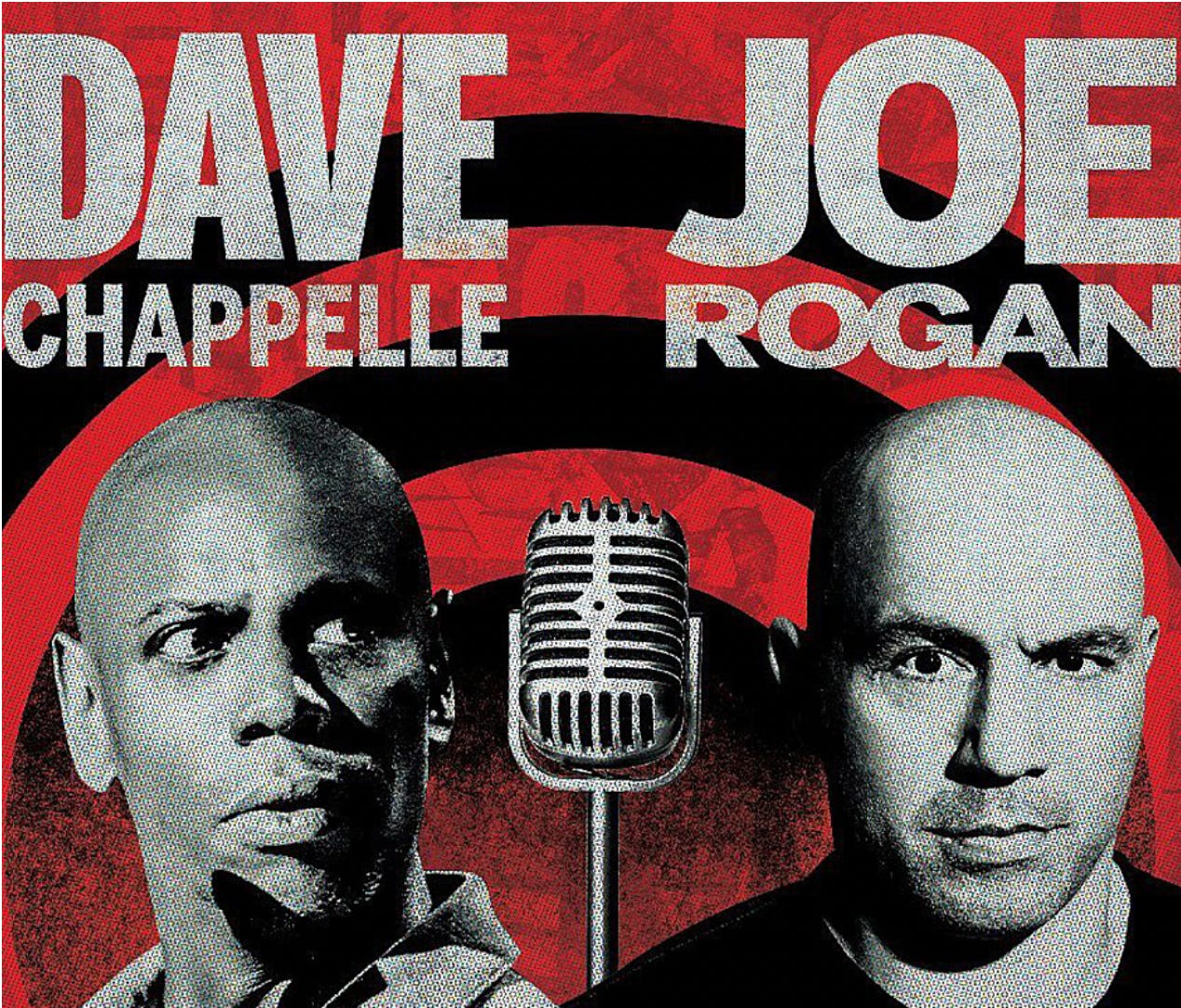Oh, we really have no idea what’s going to happen in 2022 … but here’s some stuff we’re obsessed with.

Dear Wags,
We hate to trouble you at the tail end of a troubling year. Crikey, look how many One More Thing newsletters are already clogging your inbox, reminding you of the best and worst aspects of a period you’d just as soon forget.
Let’s talk about “Best and Worst” for two ticks. In ancient times, this was an important crutch for year-end magazine editorial, back when now-fossilized beasts made the earth tremble. Strain to remember that long before social media, human beings were juiced by schadenfreude. So, on the annual, our species would indulge in these padded rehashes, celebrating the high (but most especially the low) lights of the passing year. That was a simpler time, when wicked listicles featuring Pia Zadora and Donald Trump were printed on paper (one of those targets is as forgotten as Nebuchadnezzar, while the other has proven to be as unstoppable as a zombie army). At some point, establishment media became too wobbly to go anywhere near Worst, but continued to churn out banal lists of Bests. Meanwhile, the Internet was more than happy to serve up Worst every single day of the year, robbing criticism of wicked novelty, rendering it merely depressing.
And here we are!
The Year-End Roundup, like so many other things, is over. Since the pandemic, time often feels as if it is standing still. That’s left many of us feeling like Vladimir and Estragon, trapped in some infernal loop, badgering one another with the same questions over and over. This is plainly no way to live, because while people do relish a good moan, they also need things to look forward to.
Wag was invented to restore a balance to this discourse. We want to bombard you with amusing notions, but we aren’t afraid of being thoughtful or seriousness. What we can’t abide is humorlessness, or hopelessness. Instead of yet another list, we’ll round up a few trends our enormous staff will be following in 2022. —JDH
The Great Winnowing
“Everybody knows there will only be four or five big players left standing when it comes to streaming content,” intones our favorite studio poobah. Which ones, we demand to know. “Well, Disney because of the I.P., Netflix because it got there first, Amazon because of its scale. Apple because it is Apple…” And? The line goes dead. We jiggle the little receiver thingy (Ok that doesn’t exist anymore, but just go with it). No answer. We demand the operator reconnect us in mounting panic No answer! It’s like a cheesy old thriller, and all of Hollywood has been left hanging!
But seriously, we are swiftly moving out of Phase One of the Streaming Wars, when a gajillion players cranked out a vast volume of content in a Darwinian battle for eyeballs, and into The Era of Consolidation, in which entities glom together to strain for profitability. What does this mean for viewers? Maybe a return to something like the recent past — a mature industry dominated by a few big players with niche services at the margins.
For fans of storytelling, streaming’s anarchic youth has been delightful, (f you could find what all your friends were raving about), because studios have funded an unprecedented array of quality shows that reached relatively small, if dedicated fandoms. That’s bound to change in an environment dominated by a handful of powerful companies focused on scale. Production will drop as these empires hone in, like the old majors before them, on big crowd-pleasing projects, while larding their coffers by owning or acquiring existing I.P. Long term, think more Red Notice, less Shtisel. We should already feel wistful about the Florence in the Renaissance period of television, when hundreds of smart shows were being made for the cogniscenti. We’ll still have more choice than in the old network days, but that wild frontier is fast being domesticated.—Griffin Mill
Metaverse Rising!

Oh, how they laughed! But we shall see who gets the last snigger about the Meta of it all. Whatever happens with Facebook’s pivot, we know this much — there is a race to construct ever more immersive alternative realities for human beings to lose themselves in. The focus on V/R and A/R isn’t gimmickry, it’s part of an all-out effort to capture your attention 24/7. Personalized virtual dimensions promise escape from fraught real life, which, it must be said, increasingly feels like Blade Runner. And, these fantasy lands are a potential goldmine for the tech giants who will build them, because you and your data will be spending a lot of time there.
We can see the outlines of such landscapes forming today — synthetic monospheres where one shops, games, works, loves, fights and is (mis)informed under the auspices of trillion-dollar global corporations (Googlopolis! Amazonland! TikTokopia!). The dystopian aspects of this have been well explored — will we become a society of haves who slumber in dream time, while unplugged have-nots do jobs that still require human labor, if there is work for them to do at all? Can nation states survive a mass retreat into artificial existence? The actual world is destined to become a more dangerous place as we increasingly lose touch with it.
Or not. The potential of simulated environments to advance engineering, business, recreation, education, healthcare, and the arts are mind-boggling. In an age of isolation, these technologies do knit constituencies together in revolutionary ways. Plus, being able to visit Paris or Alpha Centauri from the comfort of your living room, simply by strapping on a silly-looking headset, will be fun! The implications for old-fashioned show business are profound, another sign that the old divisions between large, passive audiences and an elite group of makers are crumbling. In the future, we may live in a world populated by billions of auteurs, each spinning out fantastical yarns in studios of the mind.
Then again, we’ve heard this sort of pitch before, and it hasn’t worked out so well. No wonder these innovations make people anxious. The push by governments and concerned citizens to rein in tech empires will only intensify, but in the meantime, entertainment companies will keep trying to exploit V/R technology to hold onto audiences, particularly in the battered theatrical market. Big picture: we’ll be fretting over who gets power over our imaginations forever.—Regina George
The End of the Red Carpet

Our very first Wag essay was about the collapse of old-fashioned awards season. This isn’t merely a symptom of the Great Pandemic, it’s evolutionary consequence. There was a time when Hollywood was defined by big stars, big studios, big projects and big audiences. All over the world, people knew who the players were — this added up to widespread fascination with who won the major award categories, and boffo ratings for awards galas themselves. For a long time now, the writing has been on the wall: The work being honored at the Oscars and Emmys is arguably better than ever, but paying attention to who prevails in such contests is a niche exercise. We don’t live in an era where everybody watches the same movies and television, and stardom no longer holds the same value. In the future, who will stream an awards show?
We expect that awards campaigning will continue to be an inside-the-industry obsession, but fewer and fewer civilians see these races as entertainment in and of itself. Far beyond Hollywood, the awards system powered mass media, fashion businesses, and a constellation of sponsored events. All of this required the very famous, who were rarely seen otherwise, to show up and have their photos taken. It also needed millions who would never be invited such events to be curious enough to look. We now have celebrity on demand, via our phones. And we can define our personal celebrity universes however we choose. This fragmentation — famous on Youtube; famous on TikTok; famous on Instagram; famous to me, but totally unknown to you; famous to sprogs, but a nobody to oldies; famous for 30 seconds and then obliterated—is an existential threat to the old Hollywood.
Covid-19 has been particularly cruel to awards season, throwing its calendar of warm-up events into disarray, upending production schedules and marketing campaigns, and undermining the programming conceits of the award shows themselves. There is a powerful inclination to see such disruption as temporary, but Omicron makes it hard to cling to delusions. This isn’t a matter of making cosmetic changes, or waiting things out. It’s a state of emergency, in which the smartest people in the business ought to think deeply about how to recapture the allure of their greatest events. If it isn’t already too late. —Scott Donlan
The Comedy Wars
Oh, must we talk about Cancel Culture and Comedy? It irritates everybody.
Yes, we must. Because, as the L.A. Times pointed out in October, this red hot controversy goes back to at least 1906. Comedians have been getting in trouble for saying the wrong thing since there have been comedians.
It is part of the deal, as Moms Mabley, Lenny Bruce, George Carlin, Richard Pryor, Mel Brooks, Kathy Griffin, Roseanne Barr, Sarah Silverman, Ricky Gervais, Bill Mahr, and yes, Dave Chappelle can attest. Comics will offend, and throughout history, a few have paid a high price for offending the wrong people. Many have also gained great fame for crossing such lines. This is the allure and danger of an often terribly unhappy profession.
Being upset by a comedian is not the blind spot of one ideological tribe or another. It is a free-floating impulse among the thin-skinned everywhere. Anybody who tells a joke takes a certain risk, because we do not all have the same sense of humor. Sadly, many of us have no sense of humor at all. Even so, sensibilities constantly change, and it costs very little to apologize for telling a joke that hurts somebody’s feelings.
Thing is, we live in absurdly unforgiving times. Rich and famous comedians are not beyond criticism for the things that they say, and you don’t have to find what they say humorous in the least. But when it comes to real issues of inequality and injustice, they are not the problem. They also inhabit the same echo chambers as everybody else, and like everybody else, tend to react defensively when attacked. Therefore it should surprise nobody that comedians often respond with variations on “lighten up” when criticized. Or that when a comedian offends people on one side of the spectrum, people on the other clamber to support them for reasons entirely unrelated to comedy. There are vast numbers of people who never saw a second of Chappelle’s The Closer who felt very strongly about it.
At the moment, all the heat in the war between a few high profile comedians and their critics revolves around the preoccupations and excesses, more or less, of the Left. This is not a static thing. Comics are also cancelled (or whatever) by the outraged Right — ask Griffin. Comedians necessarily dwell on the fault lines of sensibility, and given the hyper-polarized nature of our culture, expect more flaps in the future. Corporations, spooked by controversy, will never be the heroes of these episodes.
What’s new is that a few comedians have gained enormous influence by standing up to what is often shorthanded as wokeness. Whatever you think of their views, their underlying concerns about a specific brand of intolerance resonates with many. This doesn’t mean that other flavors of intolerance don’t matter, but they are giving voice to authentic exasperation, which seems likely to be a force in coming elections. Do not dismiss this is as a sideshow. — Rupert Pupkin
What the NFT Does it All Mean?

Admit it: You still don’t really know what a non-fungible token is, let alone how the complex crypto infrastructure that supports them works. Or, maybe you do…but you wish people would stop prattling on about them.
If you don’t know, no shame. NFT’s are essentially unique files that turn artwork, video clips, GIFs and even old tweets into collectible assets that can be traded on blockchain. The flashiest examples of this are in the high end art market (see above), where a handful of wealthy yo-yos have bought ridiculous digital tchotchkes for millions. This is a bit of a sideshow, but the broader promise of content tokens — for artists, publishers, and the entertainment industry—is dazzling.
Why? Imagine a world where the people who put in the most time, effort and money in the creative process —you know, the folks who actually make the stuff — are able to retain a form of ownership over their work long after it is spewed into a vaporous digital ecosystem. Imagine that a book chapter, magazine cover, song, or an outtake from the latest Marvel movie can be monetized, over and over, in the virtual space, just as a tangible asset can be bought and sold in the real world. For those who have borne the brunt of disruption in the internet age (record companies, publishers, studios, and of course, creatives of all kinds) this is a potential game changer—wresting back some power from third party platforms that make billions leveraging the creativity of others. Little wonder smarties are trying to find applications for content tokens far beyond Art Basel. — Adele Lack
The Search for the Next Mickey

The shift away from star vehicles to franchises has left Hollywood with an insatiable hunger of I.P. that can deliver galaxies of characters and long-running storylines. No studio wants a one-off hit, they need a self-sustaining cinematic universe that can be monetized on every platform, licensed endlessly, and squeezed for every conceivable fan experience. She may have fallen out of fashion with some, but JK Rowling is the very model of a modern entertainment mogul. She invented a world, and (with Warner Bros.) has owned that world in every conceivable space. Too bad she didn’t make this week’s Harry Potter reunion on HBO Max.
Every media empire wants its Mickey, an immortal character that drives interest and revenue across generations. Disney, of course, not only has the Magic Kingdom, but Star Wars and Marvel, too. The Lord of the Rings has been rebooted for Amazon, and the company owns 50 percent of James Bond by acquiring MGM. Warner has The Boy Who Lived, the DC Comics superheroes, and Game of Thrones via HBO. Meanwhile, Netflix is remounting The Chronicles of Narnia. Universal has its classic horror movie characters, while Sony is staking out a claim to anime. The Wag-in-Chief once sparked a flurry of interest in the rights to Little House on the Prairie. Point is, executives are thirsty for this stuff.
Much of the excitement around Dune had to do with it being a narrative wellspring that isn’t one of the old standbys that have dominated for more than a decade. But 2022’s most anticipated movies are mostly more of the same — back to Gotham City, Asgard, Wakanda, and Jurassic World, among other old neighborhoods. These locales are diverting enough, but they do point out an imbalance in Hollywood’s portfolio — it is too heavily weighted in favor of franchise tentpoles and starved when it comes to original, character-driven narratives that resonate broadly with audiences. Like all entertainment trends, it won’t last forever. There was a time when Westerns and World War II movies powered box office, and stardom may one day reassert itself as a draw. Still, we long for the days when cinema could regularly transport us to places we’d actually never been before. —Cora Peterson
And with that, Happy New Year!

